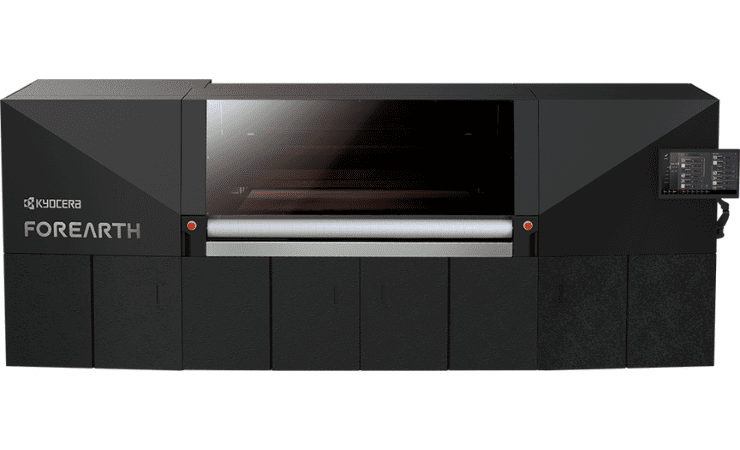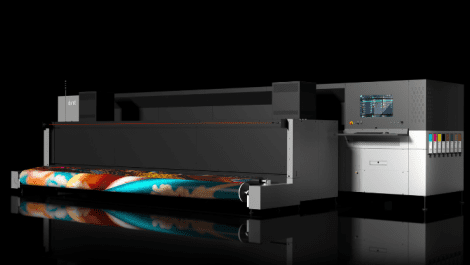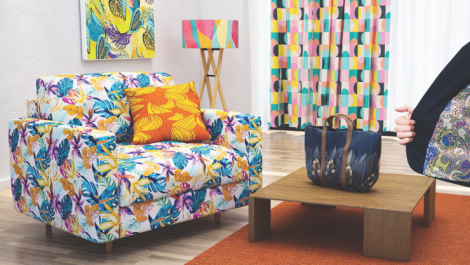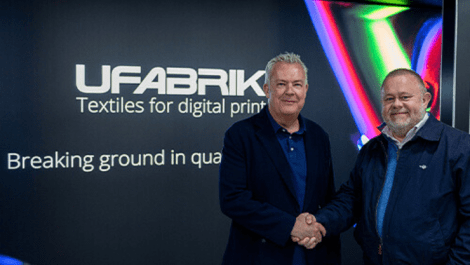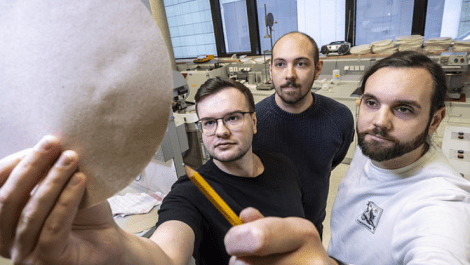Kyocera is due to release the Forearth, a new inkjet textile printer that aims to ‘eliminate virtually all water usage from fabric printing’. The company will unveil the printer for the first time outside Japan at ITMA 2023.
Traditional analogue textile printing consumes a large amount of water, especially in the washing and steaming processes, and wastewater pollution due to fabric printing is a long-standing issue around the world. Also, waste resulting from mass disposal of overstocked clothing is also an environmental concern, and the textile and apparel industries are under pressure to take immediate action toward alleviating this issue. Kyocera says it developed its new inkjet textile printer that combines patented inkjet, ink, and printing equipment technology in hopes of solving some of these environmental problems.
Forearth is an all-in-one printing system that uses new proprietary pigment ink, pre-treatment liquid and a finishing agent, which are constantly discharged in the same sequence from the inkjet head. The company claims that this system eliminates the pre-and post-processes required for conventional dye printing and ‘reduces the water consumption of textile printing by 99%’.
Forearth aims to solve the typical problems of pigment printing, such as lower colour development, fastness, and hard hand-feel, enabling detailed printing on diverse fabrics ranging from cotton, silk, and polyester to nylon and blended fabrics with a single machine.
The new printer can be fitted with up to 18 Kyocera printheads and uses water-based pigment ink. It can support up to eight colour channels (CMYK plus four specials) with ink tank capacities of 10l, on 1850mm width rolls (printable width 1800mm) at 600 x 600dpi and rates of up to 250sqm/hr. Pre-sale is scheduled for autumn 2023.
Forearth’s two-step printing and drying system is also said to shorten the number of steps from design to production, so supporting optimised production and easing location requirements; it should handle small-lot printing and shorten delivery times, helping reduce logistic costs and surplus inventories.

